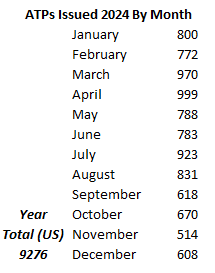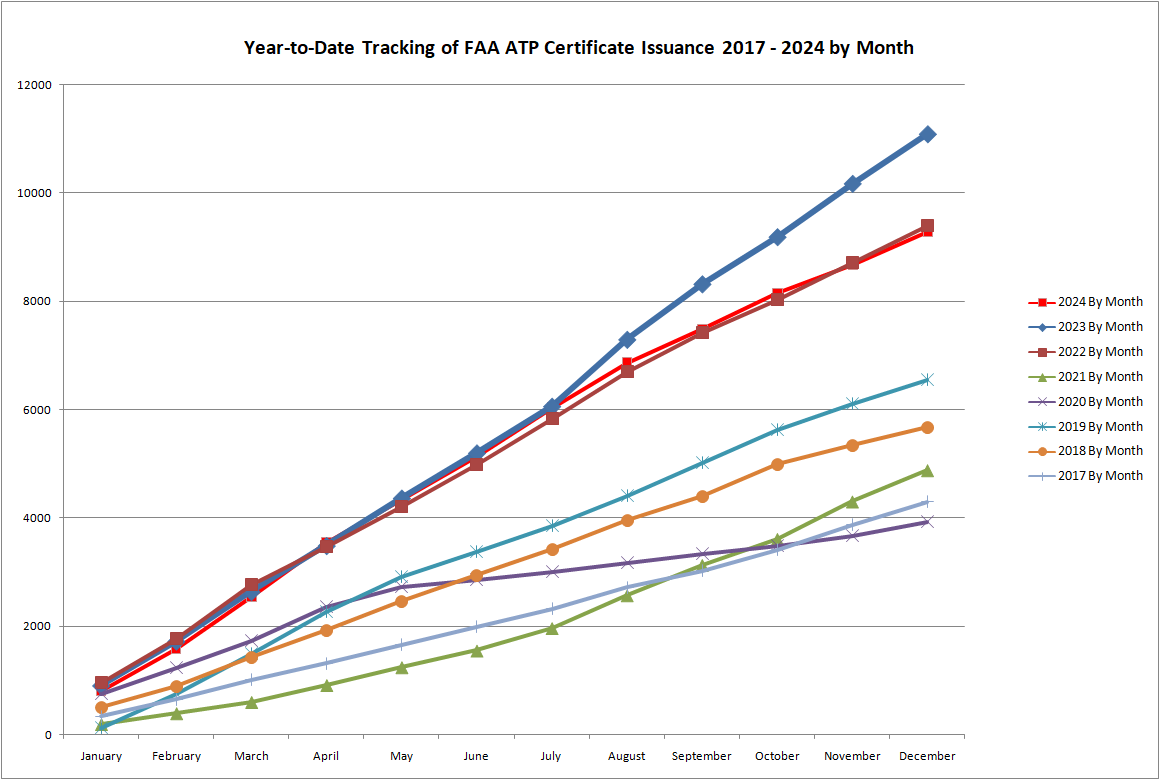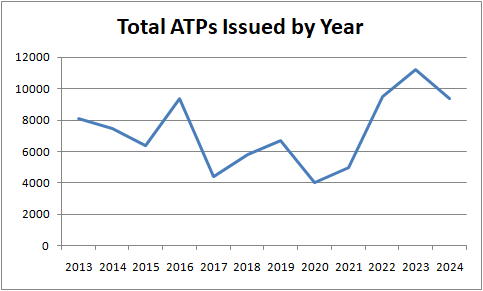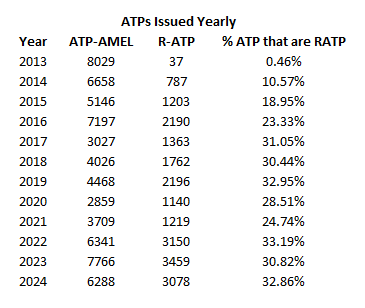
Tracking the number of ATP certificates issued every year helps us understand the flow of pilots who might be able to enter into service in airline operations for passengers and cargo in the United States.
While there has been some concern that airline hiring has decreased in 2024, the data we see from the ATP certification numbers indicates that there is still strong ATP certification happening in our pilot career pipeline.
When we look a the monthly rate, we see a slight drop in 2024 in the later months, as we approach the holiday season. This is a very common trend in the monthly certification efforts.
But let’s look a this from a more “yearly” perspective.
When we track the yearly month-by-month to a total at the end of the year, we do see that 2024 was a lower number of ATP certifications than 2023, which was a peak year in the recent past. It was, however, right on track with what was experienced in 2022.

When we look at the overall trend, we still see the dip year in 2020 during the effects of Covid-19, but since then we have been on a continued upward trend of ATP certificates overall even with some drop this past year from the highest point. It does still show that the recent 2024 numbers included robust ATP certification issuance.


Another interesting data point relates to the percentage of ATP certificates that are initially issued as R-ATP (Restricted ATP) certificates.
Since its inception in 2013 the number of these that have been issued increased and has stabilized at roughly 1/3 of the ATP certificates issued each year. This again relates to the fact that many initial ATP certification events are paired with initial airline training events at regional airlines. These pilots then follow that certification with removal of the restriction when they meet additional minimum requirements for full ATP certification. This is most commonly met after some time in service as a First Officer at a regional airline.
This data point is relevant because it is a continued indicator that a large number of pilots might not be able to enter into service as airline pilots without the lower R-ATP minimums in place. It is additionally an indicator that many pilots are entering into airline pilot jobs who met R-ATP minimum eligibility, typically through having trained and gained experience in collegiate aviation programs that qualify a pilot for an R-ATP certificate. This remains a critical part of our pilot training pipeline.
Hopefully, you find this data on ATP certification as interesting as I do!

Thanks Jason